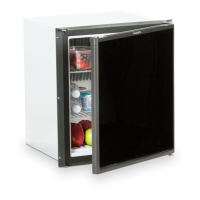19
Electrical installation
Electrical installation may only be carried out by qualified personnel.
The connection cables must be laid in such a way that they do not come in
contact with hot components of the unit/burner or with sharp edges.
The electrical installation must comply with national regulations (EN
60335-1 for Europe).
Power line connection
The power must be supplied via a properly earthed socket outlet or hardwired
connection.
Where a socket outlet is used for the mains connection lead, the outlet
must be freely accessible.
It is advisable to run the incoming supply through an on-board fuse or automatic .
circuit breaker. The power cable must be laid in such a way that it does not come
in contact with hot components of the unit/burner or with sharp edges.
Battery connection
The machine's mains 12V connection cable is connected (observing correct
polarity) to a terminal strip.
The cabling must be direct and by the shortest possible route to the battery and
alternator respectively.
The heating element circuit must be connected to the vehicle battery by a suitable
ignition operated relay in order that the 12V supply is only live while the vehicle
ignition is switched on.
It is recommended that the electronic re-igniter and the interior light is connected
to the on-board auxiliary battery.
Cross-sectional area of cable Length of cable
4mm
2
< 6m
6mm
2
> 6m
The 12V circuit must be protected with a 16A fuse.
IMPORTANT:
To prevent the refrigerator from being left on and
draining the battery when the vehicle's engine is
not running and charging the battery, it is recom-
mended that an automatic cutout relay be installed
between the battery and the refrigerator toggle
switch so that the refrigerator will not draw current
when the vehicle ignition is switched off.
Alternatively, a suitable plug and receptacle should
be installed in the 12V supply line so that the refri-
gerator can be disconnected from the supply, as
necessary.
6.6
6.6.1
6.6.2

